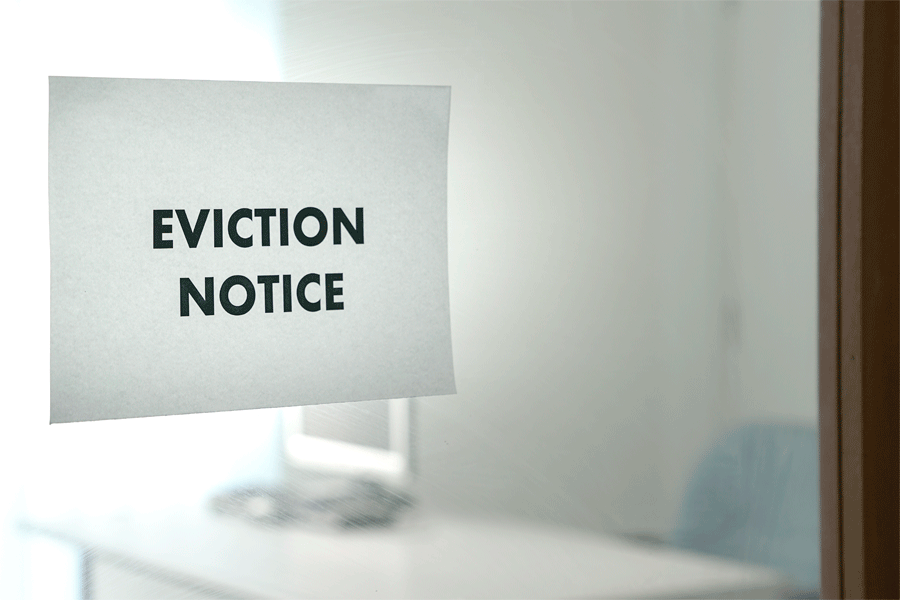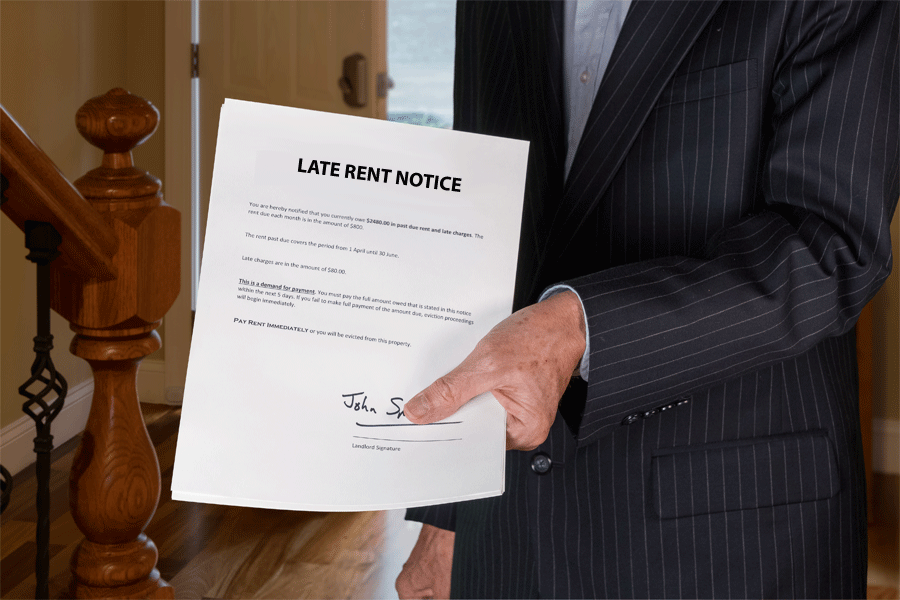A notice to vacate is an official document written by a tenant to their landlord or property manager to notify them of their intention to vacate the premises.
This notice can be used for both commercial and residential properties. The purpose is to give notice of the move so property owners can plan for maintenance, clean out inventories, and prepare grounds for re-renting. While the notice will typically be issued at the end of a lease, it can be written any time you intend to move out, whether your landlord is aware or not.
The notice should be written in compliance with the terms and conditions of the existing lease agreement and local and state laws. Commonly, the notice period is thirty (30) days, but this can vary from 30 – 90 days, depending on the property owner/manager.
The alternate names used to refer to a notice to vacate include:
- Notice of intent to vacate
- Move out notice letter
- Letter to vacate premises
It must be written, meaning any verbal or text message notices are considered invalid. Therefore, if you intend not to renew your lease agreement, it is highly advisable that you send a move-out notice to your landlord before the notice period closes on the official move-out date. This article will discuss its importance, explain how you can send one, describe its main components, and provide free templates that you can edit and use instead of making one from scratch.
Free Notice Templates
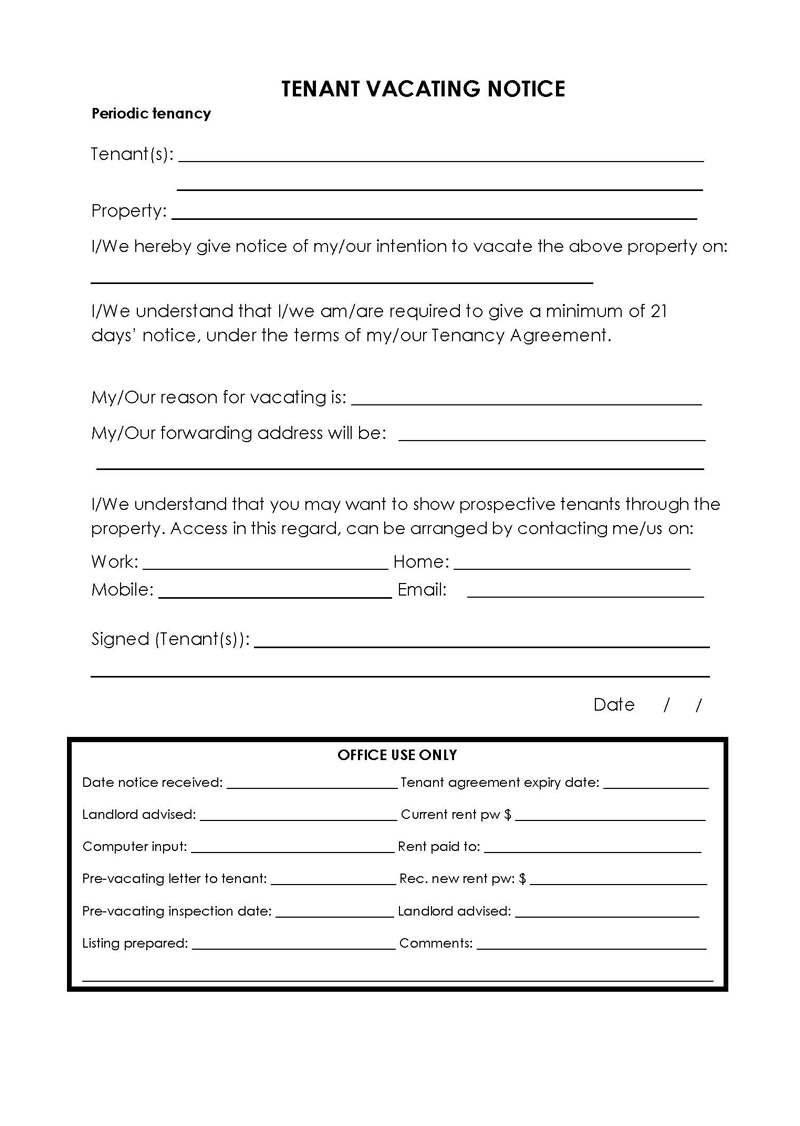
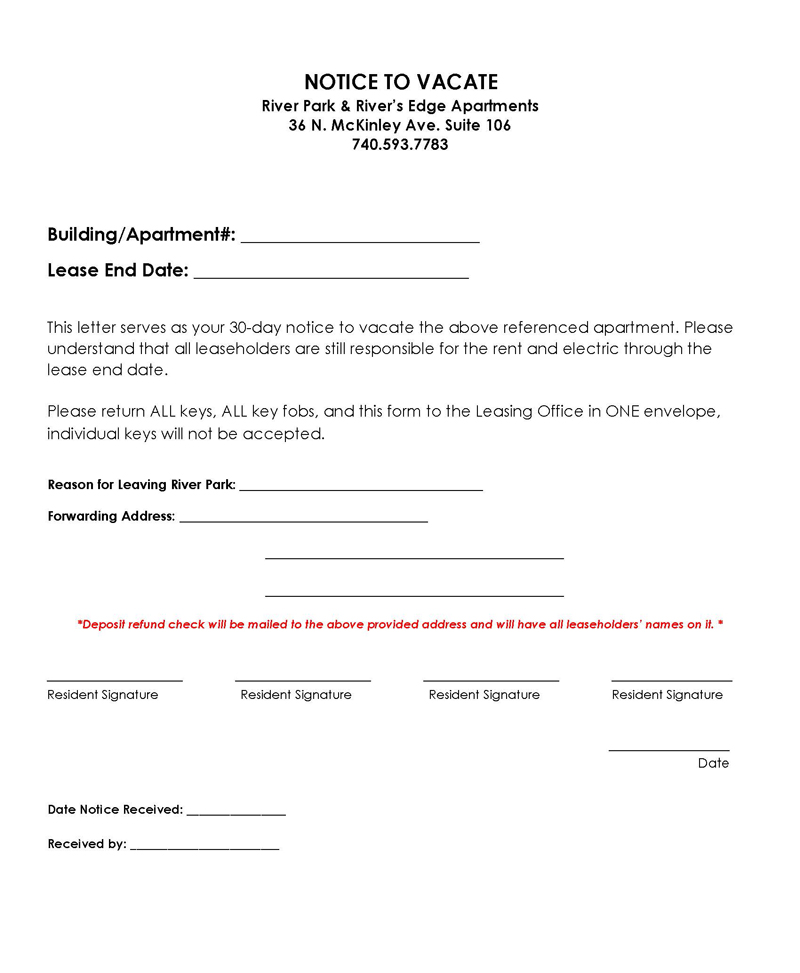
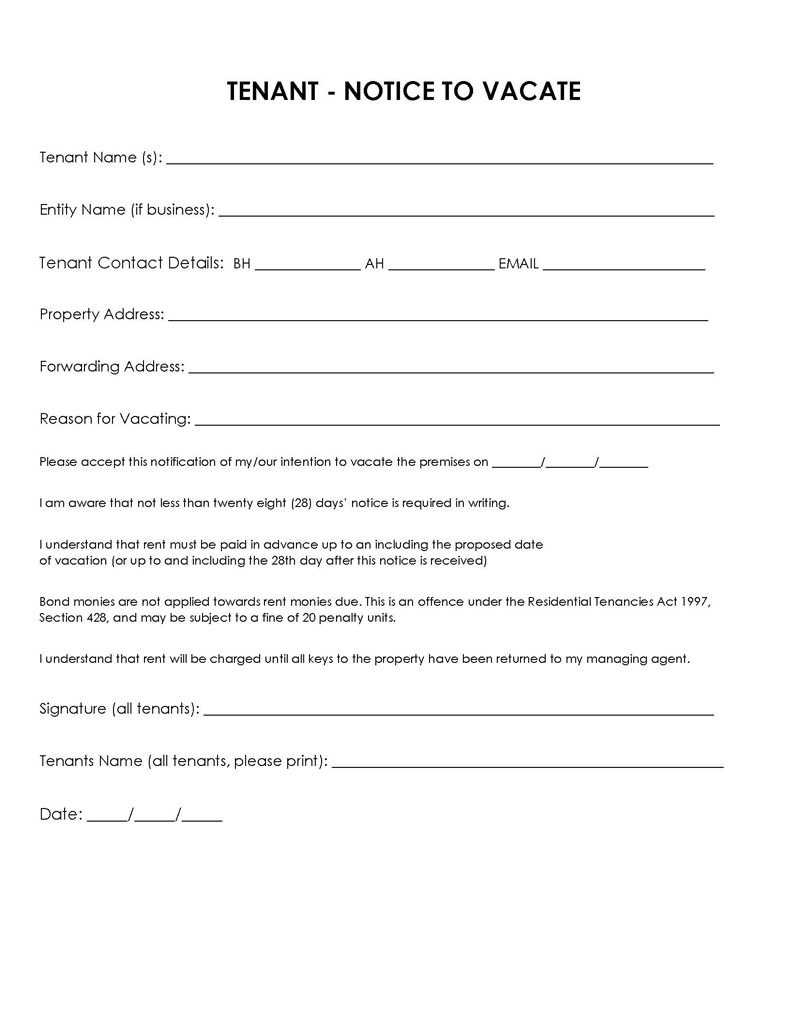
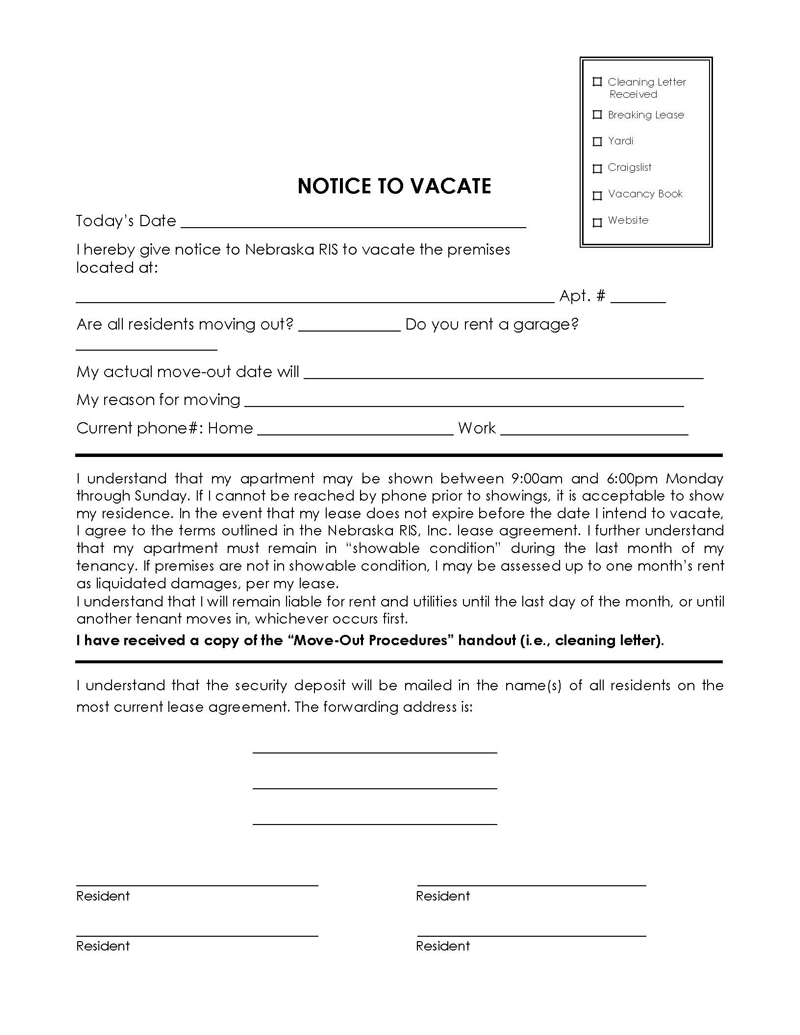
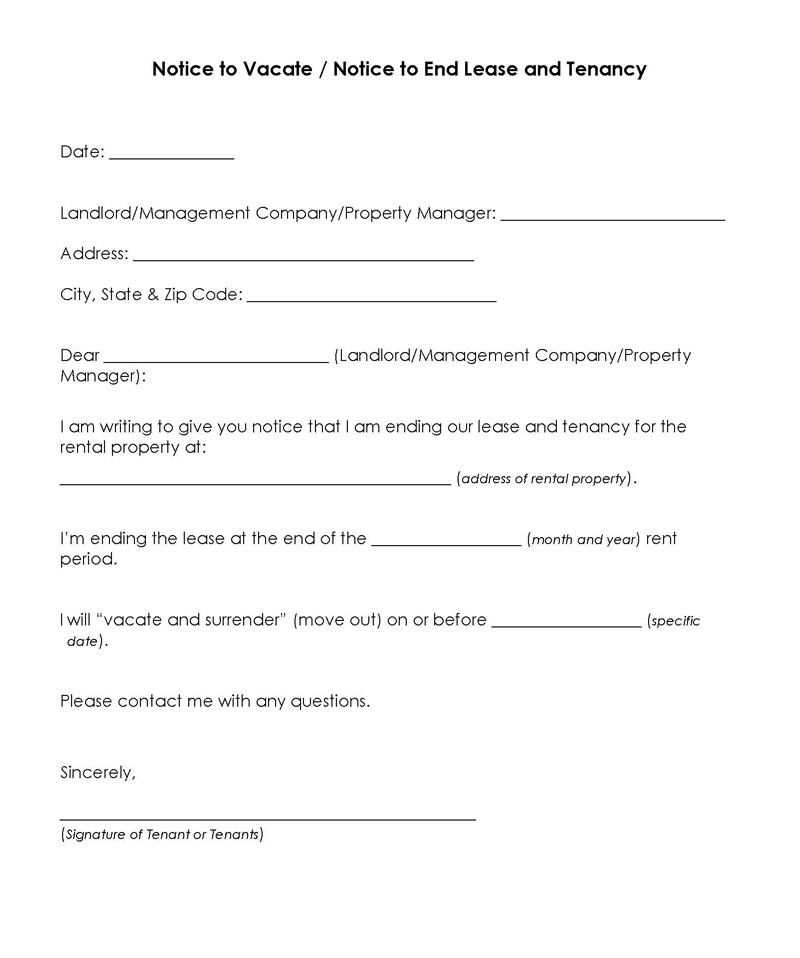
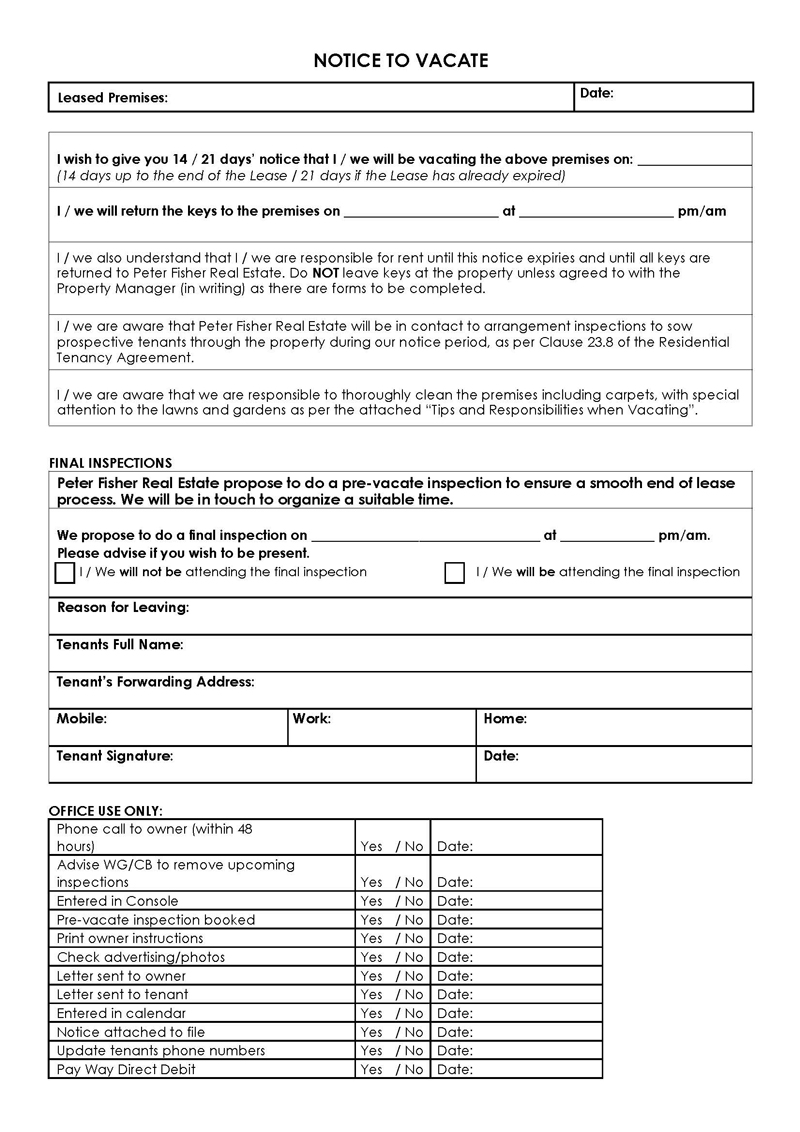
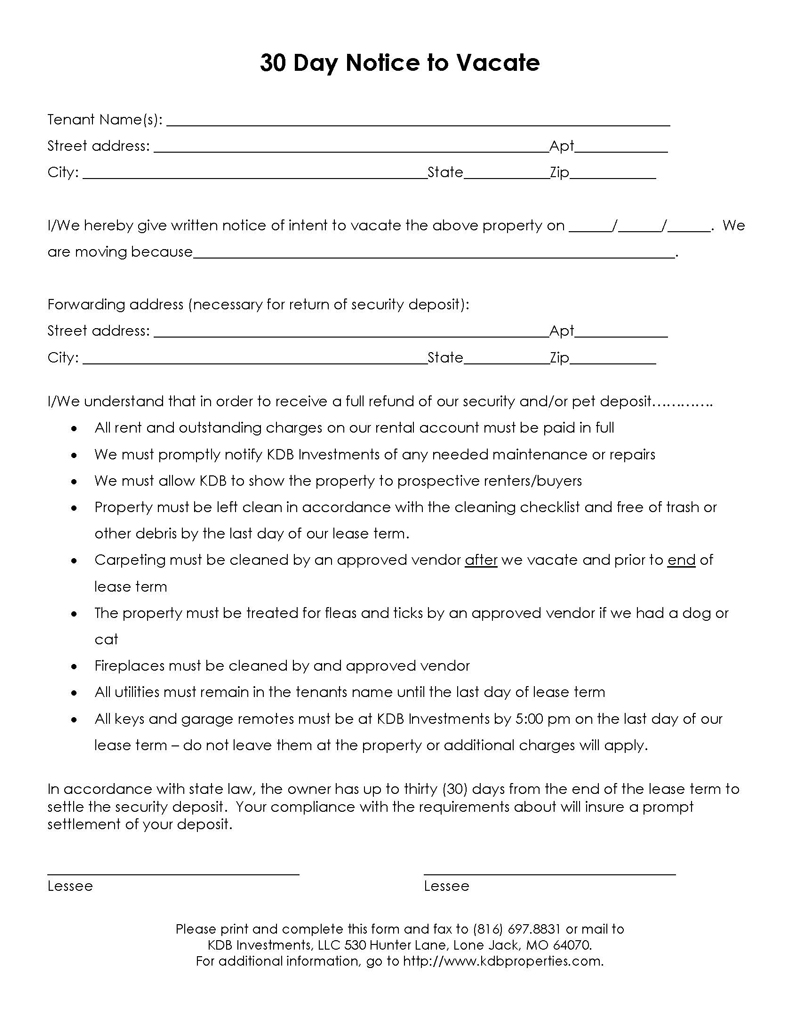
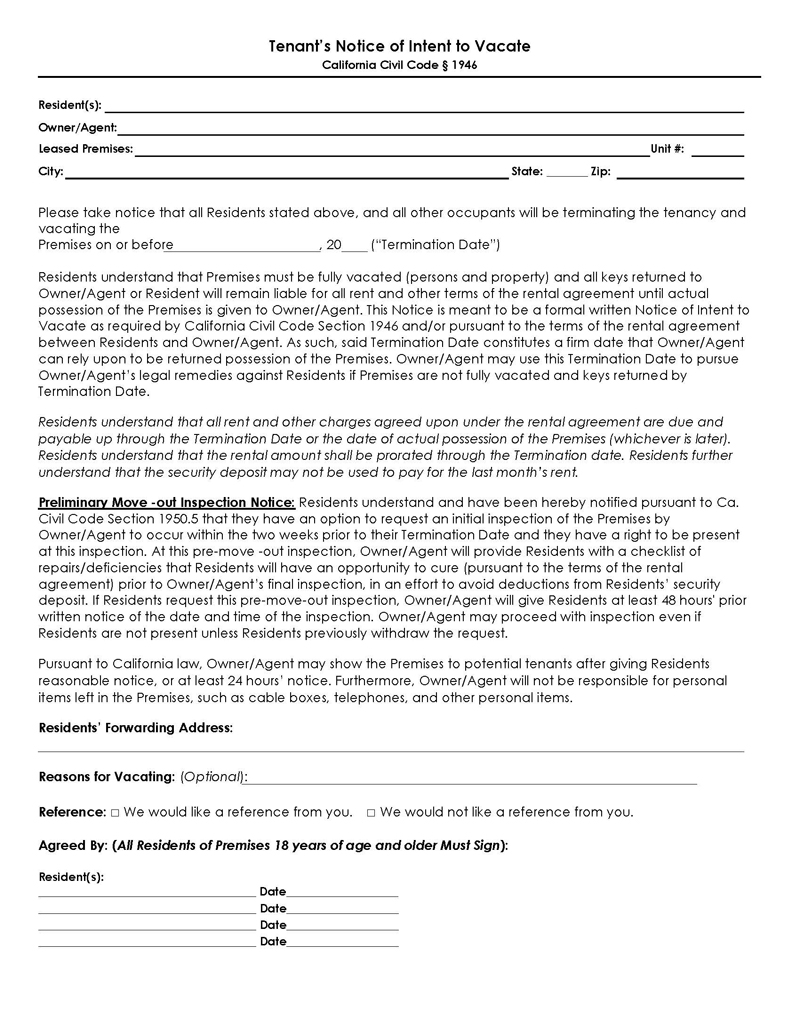
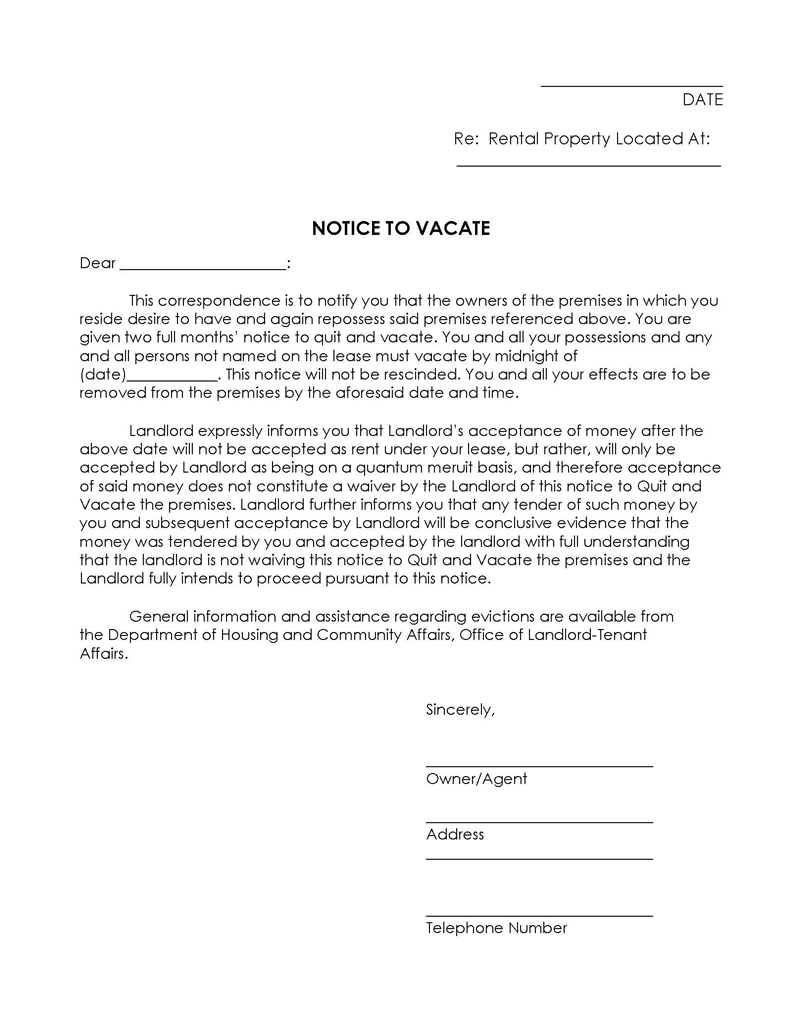
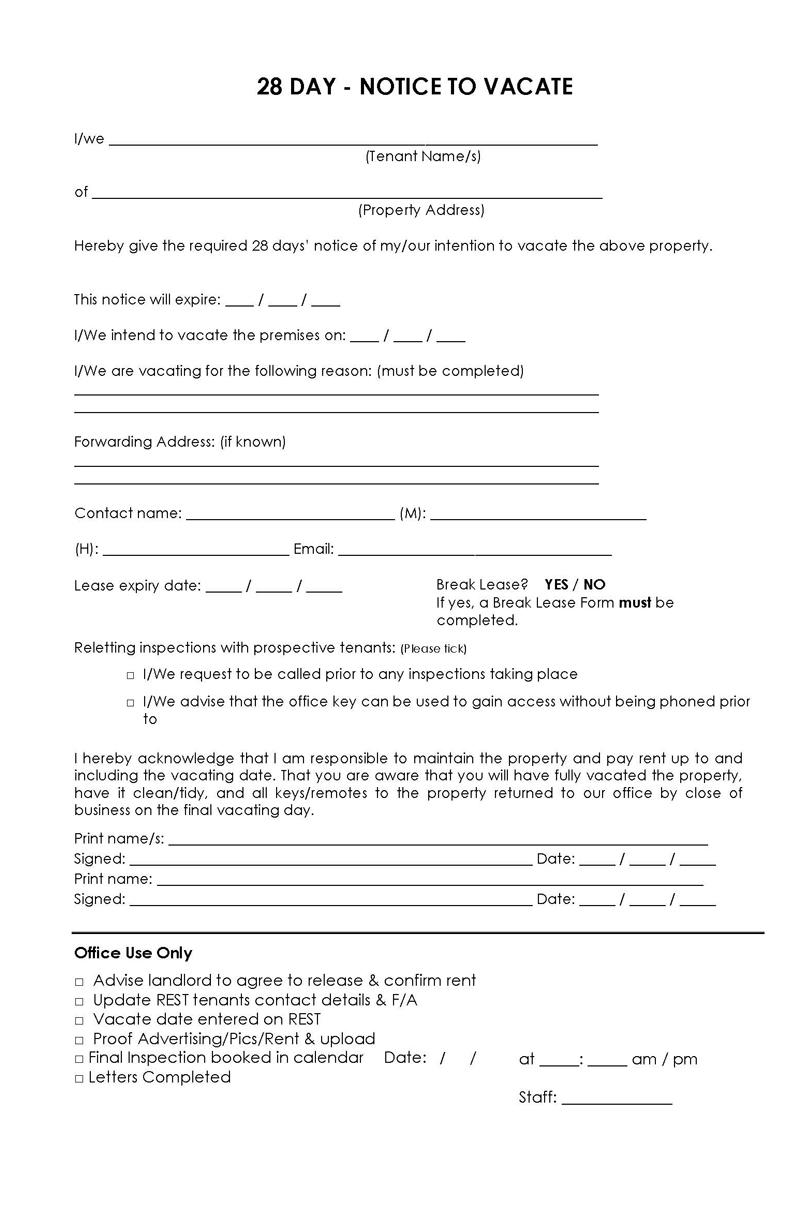
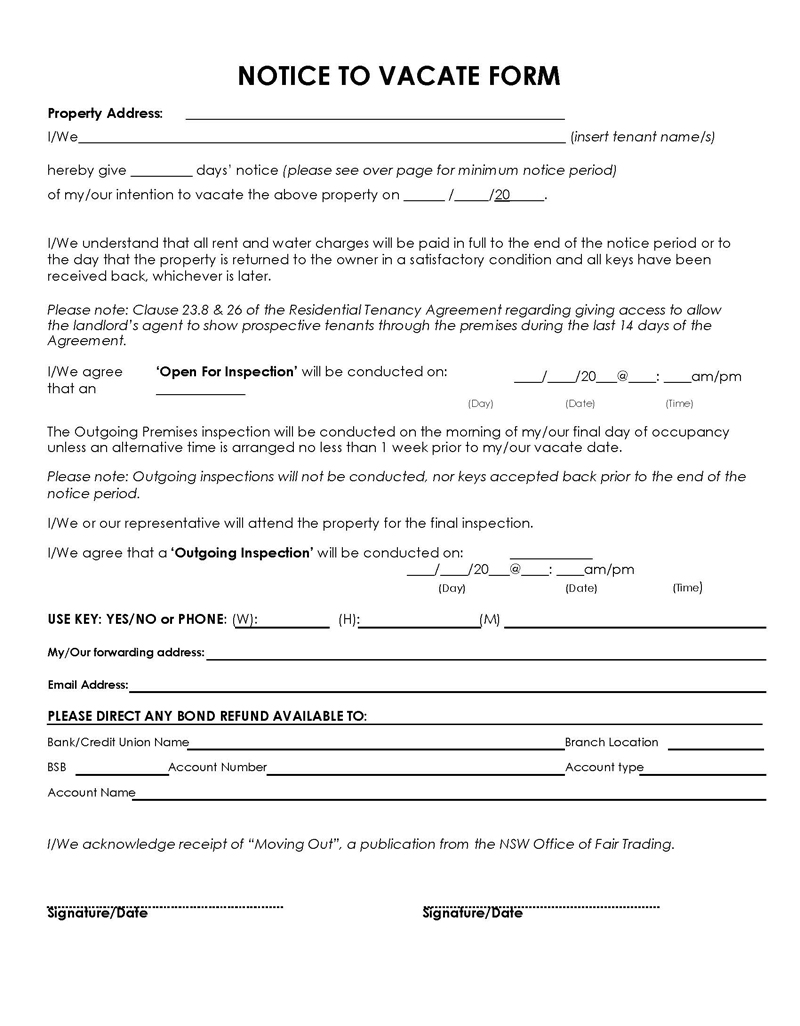
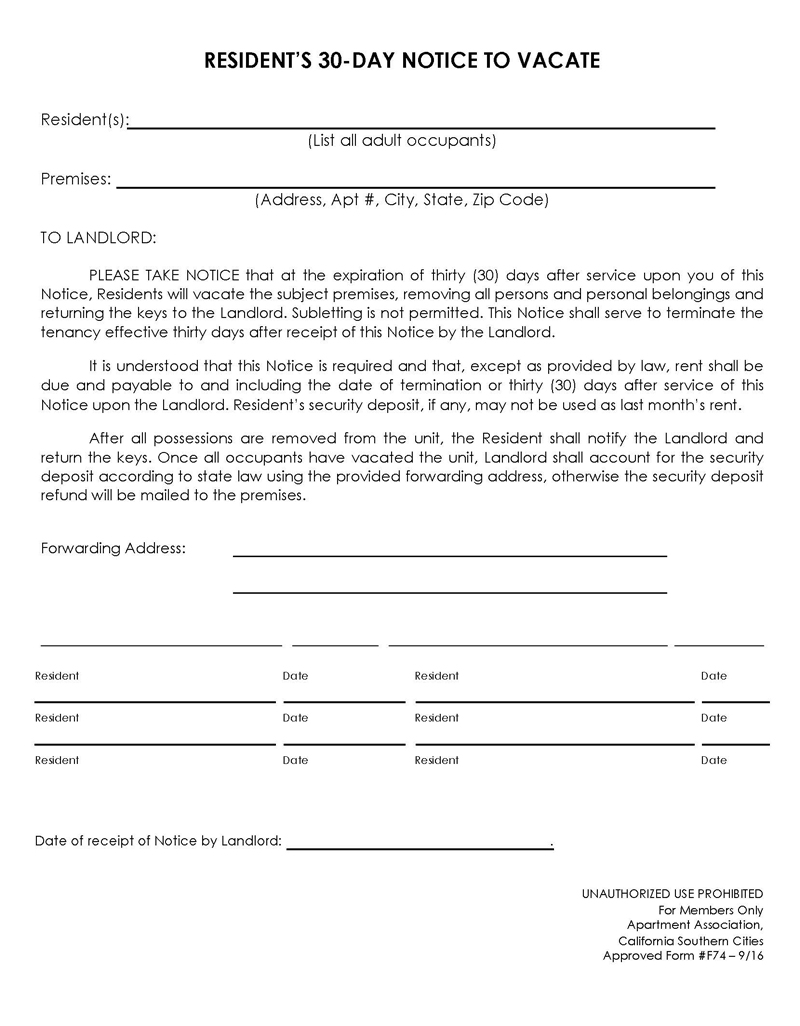
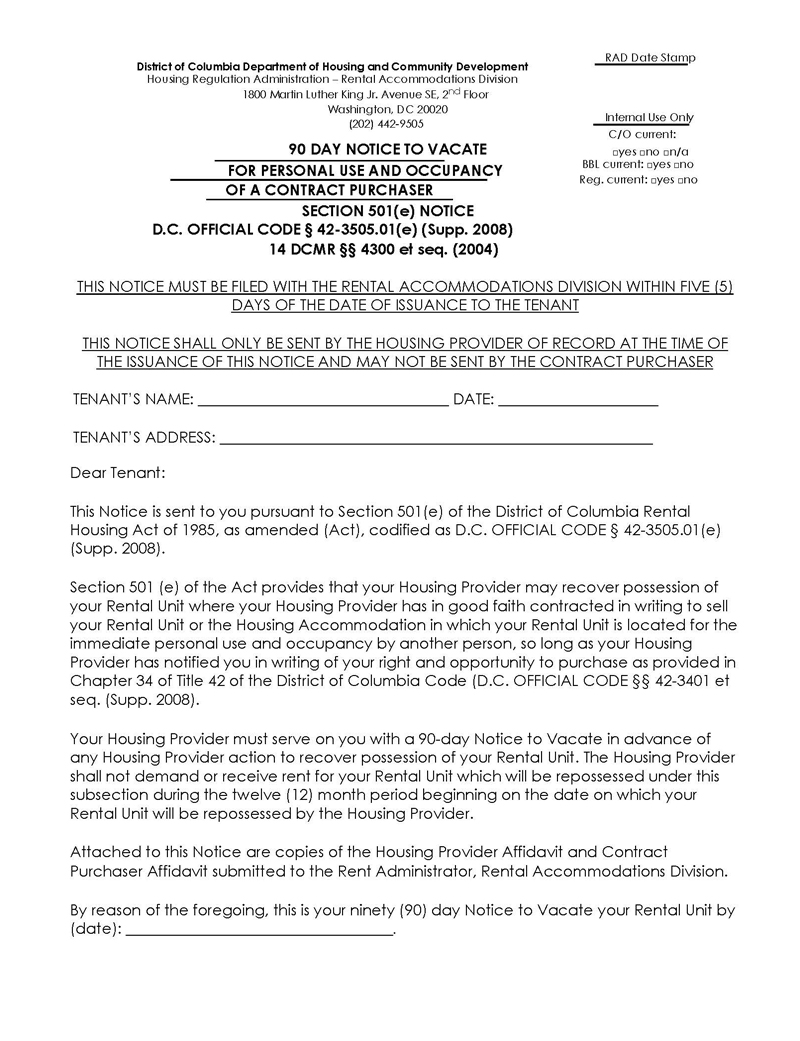
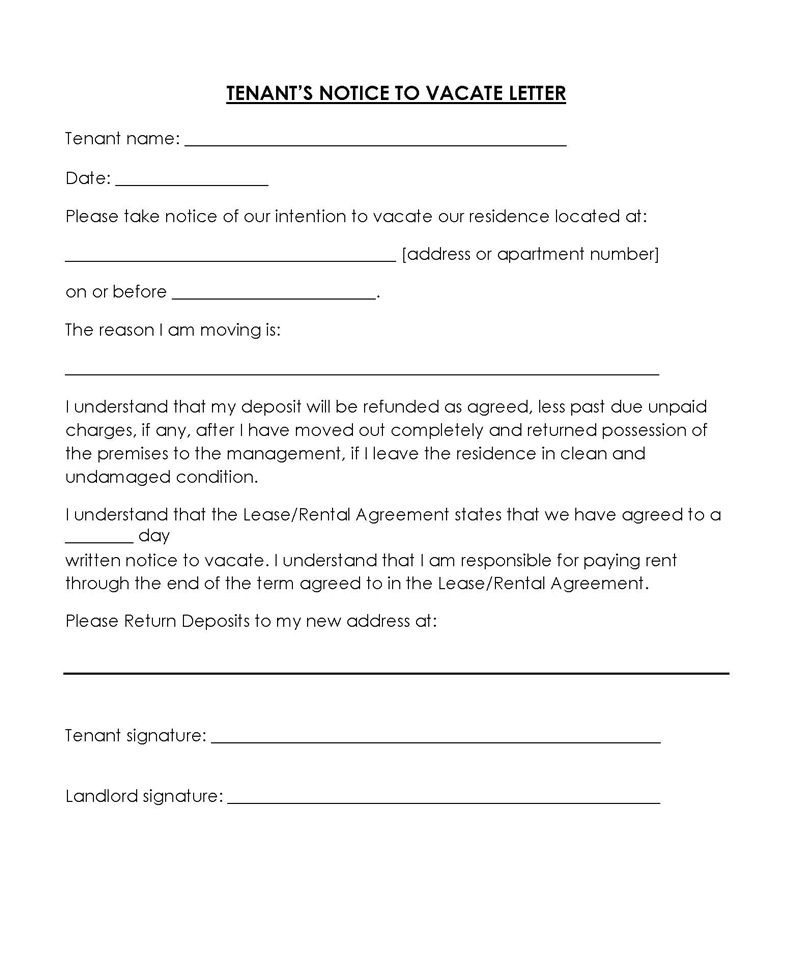
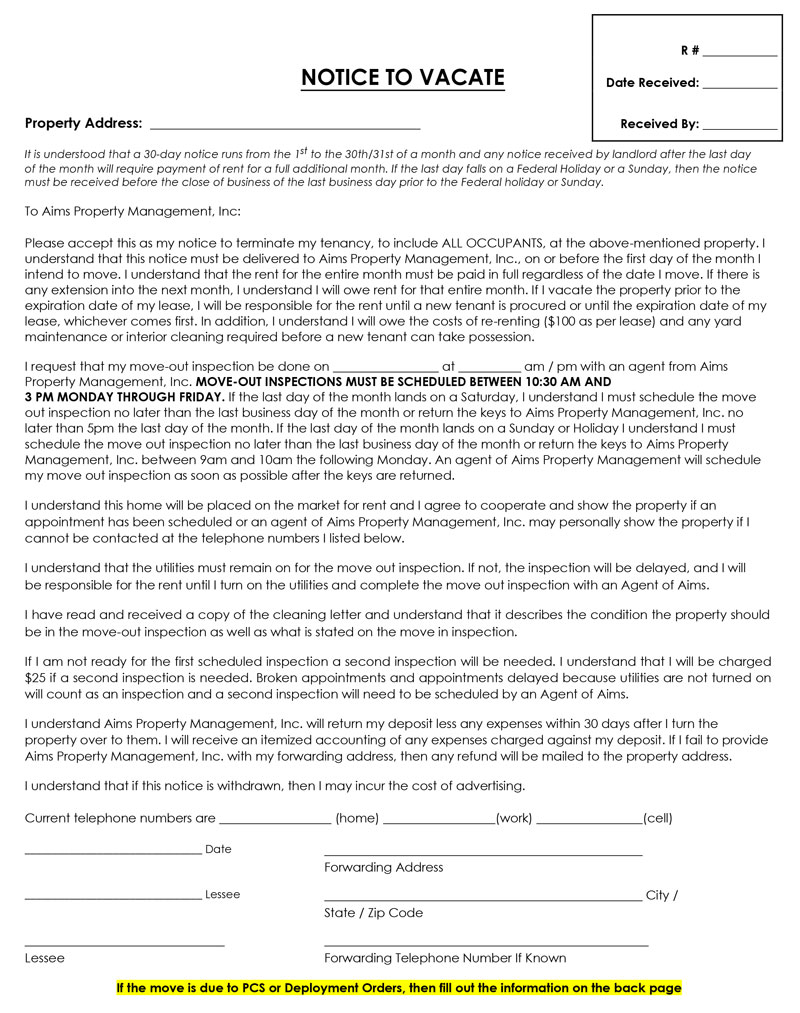
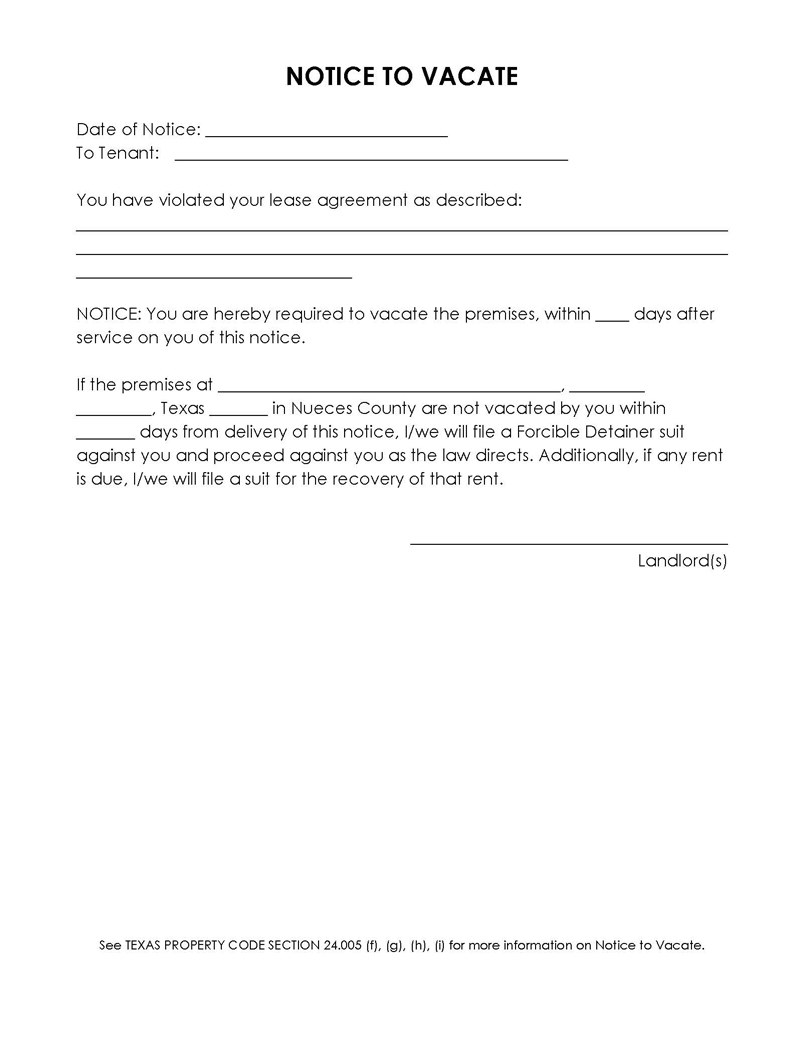
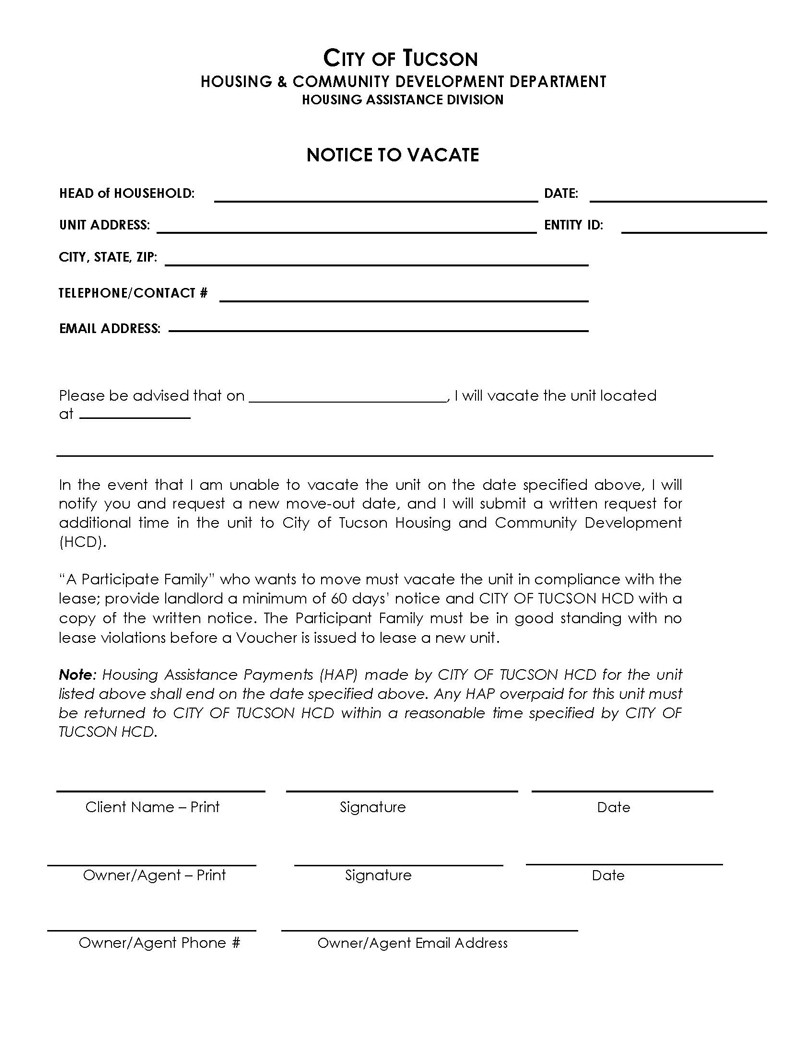
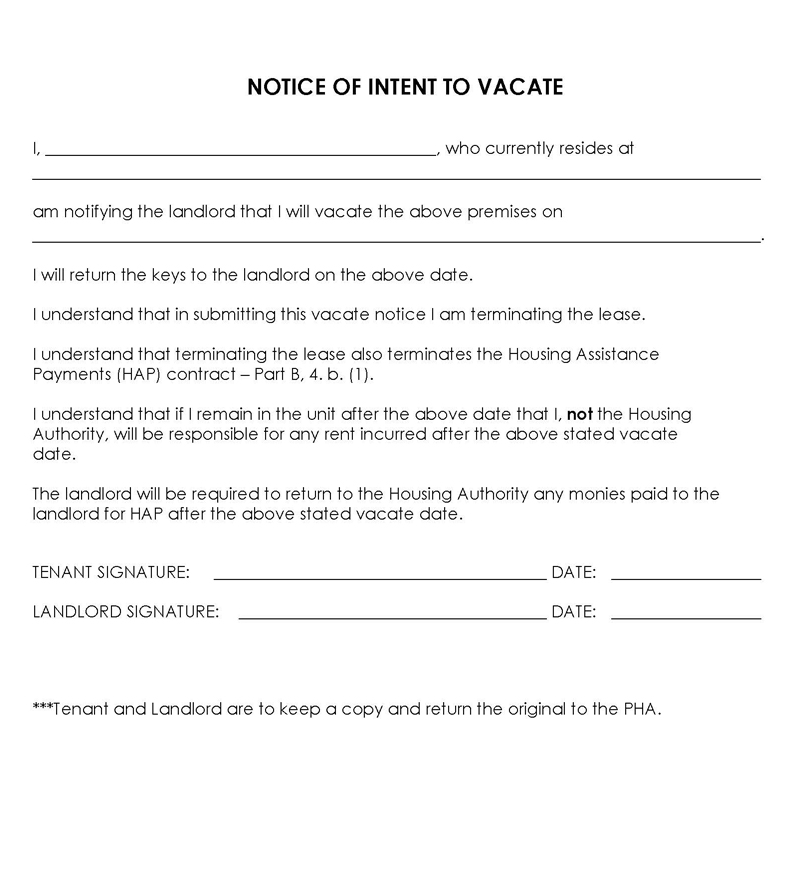
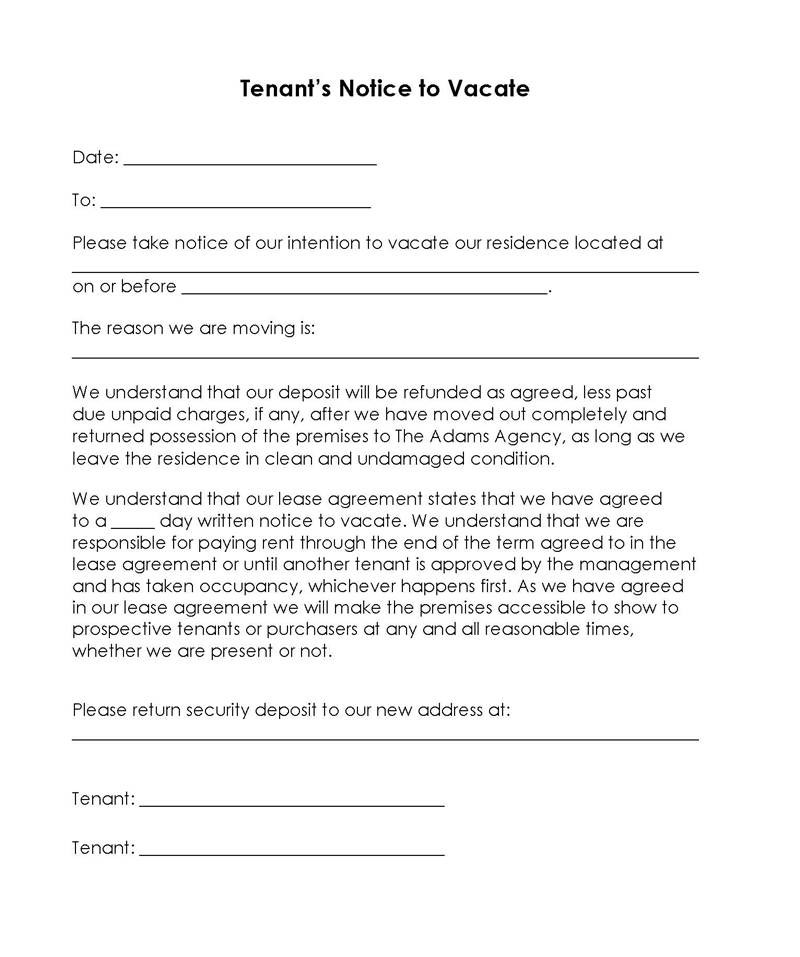
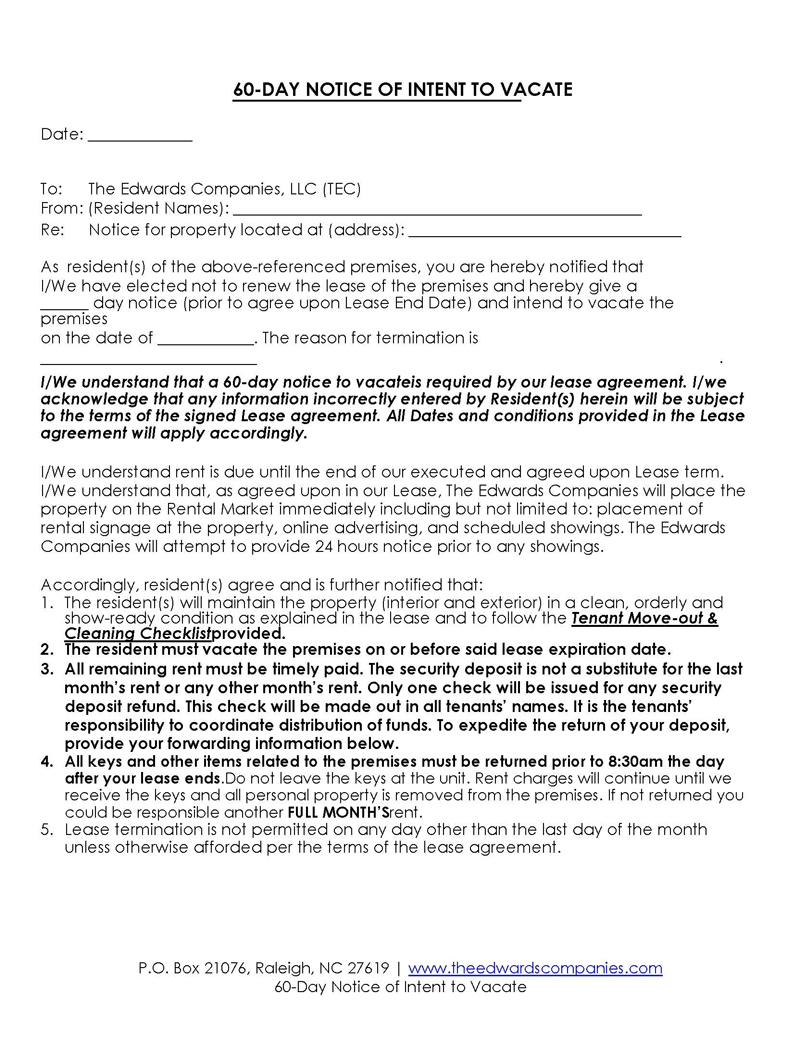
Why You Should Give the Notice
There’s often confusion as to who is responsible for preparing the proper documents at the end of a lease. However, as the tenant, you should always take it upon yourself to ensure you issue all the required documents, such as a notice to vacate. Such a notice is often written as part of due diligence in the move-out process. It helps you avoid any remaining lease obligations by giving your landlord a clear move-out timetable.
If you intend to move out in 30 days or less, it is a communication tool notifying the landlord of your intention, so the landlord will know that he or she needs to find a new tenant within this period.
It also allows for any potential disputes to be settled before the move-out date. If you are in dispute with your landlord about the property and payments, 30 days gives ample time for both you and your landlord to agree. This way, you can vacate on good terms with the landlord, which comes in handy if you intend to use them as a reference for your next rental application.
The notice also allows you to provide a forwarding address where the landlord can send any correspondence and mail your security deposit check.
note
To send a notice to vacate, you must be legally able to move out of the property.
How It Works
An effective notice should cover all the relevant details needed to communicate your intent to move out and must comply with applicable provisions in the lease agreement and rental laws.
To ensure all the mentioned aspects are covered, the steps provided below can be used when you want to send it to your landlord:
Step 1: Read the original lease
The first step is reviewing the existing lease agreement and determining its stipulations regarding issuing notices. Most lease agreements will always include instructions on the proper procedure to undertake the process. You should determine if a formal notice is needed, the required information, the appropriate delivery method, the notice period, and other applicable terms of lease termination.
Step 2: Decide the amount of notice
The next step is to decide the duration you need to give your landlord. The time period varies depending on the length of time you intend to stay, the amount of time you need to move out fully, and the number of requirements your landlord has. Make sure that you settle on a period you can abide by that leaves ample time to complete all the procedures required to move out.
note
The notice period is often 30 days but can be 45 or 60 days. Periods can extend from 30 to 90 days.
Step 3: Check applicable state laws
Next, you should review applicable state laws to safeguard yourself from potential legal ramifications in the future. This is because lease agreements are governed by state laws that vary from one state to the next. Most states issue guidelines on the number of notice tenants should give before moving out, typically from 30-90 days. Involving legal counsel is a good way of ensuring you comply with applicable laws.
Step 4: Write the notice or use a template
Once you have determined the amount of notice to give and reviewed applicable laws, it’s time to draft a notice. This step requires you to first draft the notice and then use it as a communication tool with your landlord. It need not be long and detailed and can follow any format you choose. Therefore, you can opt to prepare it from scratch or use a pre-made template. Note that templates offer a more efficient and quick method. Next, you should fill out the template with the necessary information.
Step 5: Send the notice
After filling out the template, you can send the completed notice to the landlord. It is crucial to use a method that has proof of delivery, and thus certified mail is typically recommended. This is in case the mail gets lost or the landlord claims to have never received the notice; you can always produce the signed proof of receipt to verify that you sent it to vacate. Alternatively, you can hand-deliver it, and some landlords will sometimes accept emailed notices.
note
Any violation of the lease agreement or damage to property before moving out may affect your security deposit and the month’s rent. This is because you are financially obligated to ensure you leave the space in good condition, and it is the landlord’s responsibility to ensure the funds to cover associated expenses are collected from the tenant. Always make sure a property walkthrough is undertaken to ensure you receive your security deposit.
What to Include in Notice
When writing your notice, you should ensure that it contains all the necessary details for the landlord to take timely action. When drafting it, you can use either a formal or informal approach, depending on your relationship with your landlord.
A reusable template should contain the following components:
Your personal information
You should include your personal information, such as name, address, contact number, and lease term. This information is important because it enables the landlord to identify you without having to search through resident files. It also favors future communications between both parties.
Landlord’s details
If you are responsible for coordinating the move, you can also include key details about your landlord, such as their contact number, email address, and company name. This allows you to better identify the recipient and facilitate communication with them.
The landlord’s address/property address
The template should include the name and physical address of the property. This information can be found in the lease agreement. This information is necessary in case the landlord has multiple properties, and it’s important to specify which property you reside in.
Dates
It should include dates about when the letter was sent and the date of moving out. You should include the day, month, and year.
Number of days to vacate
After settling on a reasonable notice period, indicate it in the template. This is the number of days from the move-out date.
Final walkthrough request
You should then suggest a date when the landlord can come and inspect the premises after you’ve removed all your belongings. Having this walkthrough is a way of ensuring that you get your security deposit in good time.
Relevant lease clauses
Afterward, the template can mention any clauses in the lease agreement that have been referenced in preparing the notice. Typically, one or two clauses that mention the proper procedure can be referenced. Clauses that address a walkthrough can also be included.
Forwarding address
Lastly, you should supply a forwarding address that the landlord can use for correspondence later in the future. The forwarding address can be your new address. The landlord can then use this address to send the security deposit. If you don’t have a new address by the time you’re sending the notice, you can give them your forwarding address later on through email or phone.
Sample
Subject: Notice to Vacate 123 Main Street, Apt 4B
Dear Mr. Smith,
I am writing to formally notify you that I will be vacating the premises at 123 Main Street, Apt. 4B, in accordance with the terms of my lease agreement. This notice complies with the lease agreement and provides the required 30-day notice, as stipulated in Section 5(a) of the lease agreement.
The current lease term began on June 1, 20XX, and is set to expire on May 31, 20XX. I am hereby providing notice to vacate the property on January 28, 20XX, which is 30 days from the date of this notice. This should ensure a smooth transition and give ample time to find a suitable replacement tenant.
I kindly request a final walkthrough of the property on February 15, 20XX, at 10:00 AM, which is a mutually convenient date and time. This walkthrough will allow us to assess the condition of the premises and ensure that all responsibilities, as outlined in the lease agreement, have been fulfilled. Please let me know if this date is convenient for you or if you would like to propose an alternative date.
As per the lease agreement, I would like to refer to Section 12(b) which outlines the proper procedure for returning the security deposit. I have taken good care of the property, and I will ensure that it is in the same condition as when I moved in, aside from reasonable wear and tear.
For future correspondence and the return of my security deposit, please use the following forwarding address:
[Apartment number XXX]
[Cityville, CA 98766]
I want to thank you for being a responsive and accommodating landlord during my tenancy at 123 Main Street, Apt. 4B. I have enjoyed my time here, and I hope the transition process will be straightforward.
Please feel free to contact me at (555) 555-5555 or yourname@email.com for any further information or coordination required during this process.
Thank you for your understanding, and I look forward to a smooth transition.
Sincerely,
[Signature]
John Doe
Analysis
This letter serves as a useful example for those seeking guidance on composing a notice to vacate. It effectively combines clarity and formality, addressing the recipient with respect while clearly stating its purpose in the subject line. Moreover, it meticulously adheres to the lease agreement terms by providing the required 30 days’ notice and specifying the exact date of vacating the property, ensuring a transparent and unambiguous transition process.
Furthermore, the letter demonstrates responsibility by proposing a final walkthrough to assess the property’s condition and fulfill lease obligations. It offers flexibility by suggesting a mutually convenient date and time, enhancing cooperation between the tenant and landlord. Additionally, it references the lease agreement’s section regarding the return of the security deposit, underscoring the author’s commitment to following proper procedures and maintaining the property’s condition.
Lastly, the letter includes essential details such as a forwarding address for future correspondence and the return of the security deposit, facilitating seamless communication and compliance with the lease agreement. Expressing gratitude for the landlord’s responsiveness and providing contact information further adds a personal touch and ensures accessibility for any necessary coordination during the transition. In essence, this letter serves as a comprehensive and well-structured template, encompassing all the crucial elements for a professional and successful notice to vacate.
Best Practices to Follow
In addition to following the steps above and incorporating the aforementioned components in a template, there are some simple things you should always do to guarantee an effective notice:
Be polite and respectful
Give it politely and respectfully. If you want to leave the property because of your landlord’s poor management or have pending issues, do not be rude; it is better not to mention it at all. Instead, clearly state that you are moving out of the property and give reasons.
If you do not like living in the community that your landlord is managing, then state this too politely. Being respectful will help ensure a happy relationship with your landlord and a good reference in the future.
Use clear and concise language
Using clear and concise language will help ensure you use the correct terms and give your landlord relevant and accurate information. It will also help you avoid any legal issues in the future.
Use an appropriate format
Choose a format that is easy to read and understand. There are multiple templates available on the internet; select one that communicates what you intend effectively. Always check if all the essential components are provided and are arranged formally. The language used in the notice should also be formal.
Proofread
In the end, proofread your notice a few times to ensure you are using the correct terms and wording. If you are not sure about writing, it is advisable to seek legal counsel. Have someone else read it over and check for any loopholes in it. This will prevent you from making any errors that can be used against you in the future.
Consult a sample or use a template
Consulting a sample will help you be more familiar with the exact language that needs to be used. You can also find templates online and use them as a guide for drafting your own written notice.
More Free Templates
Provided below are additional free templates for your ease of access and additional guidance in the process. In case you find the forms we provided before inadequate, you can utilize the ones below:
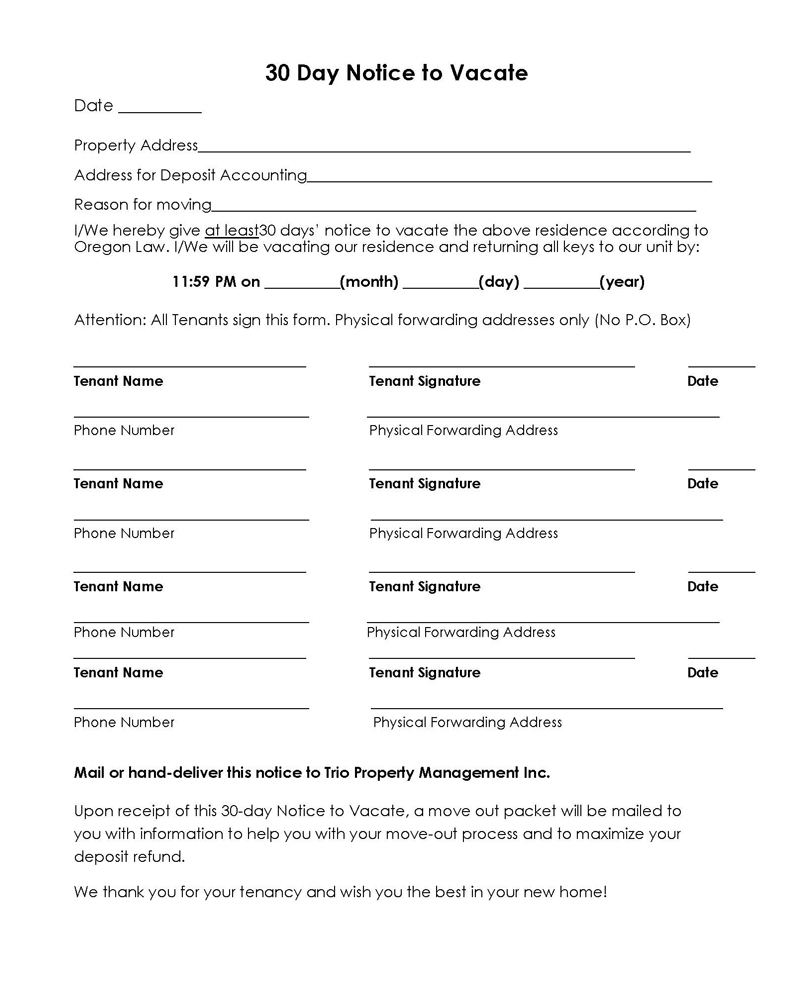
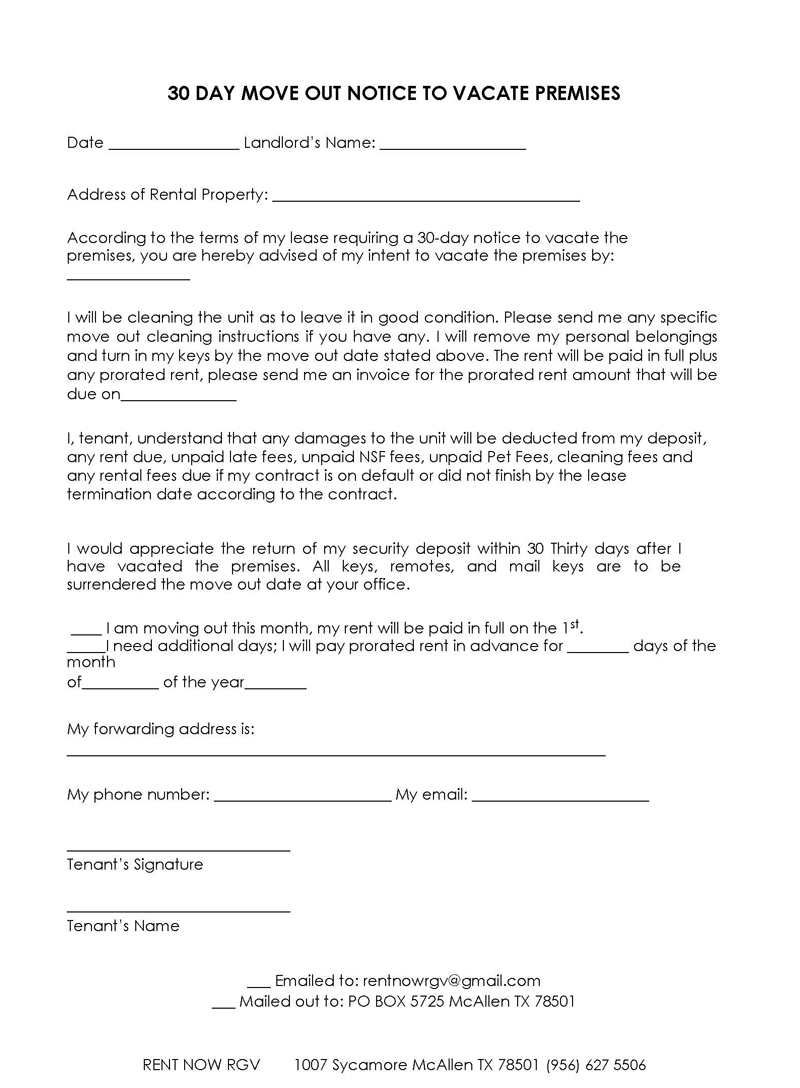
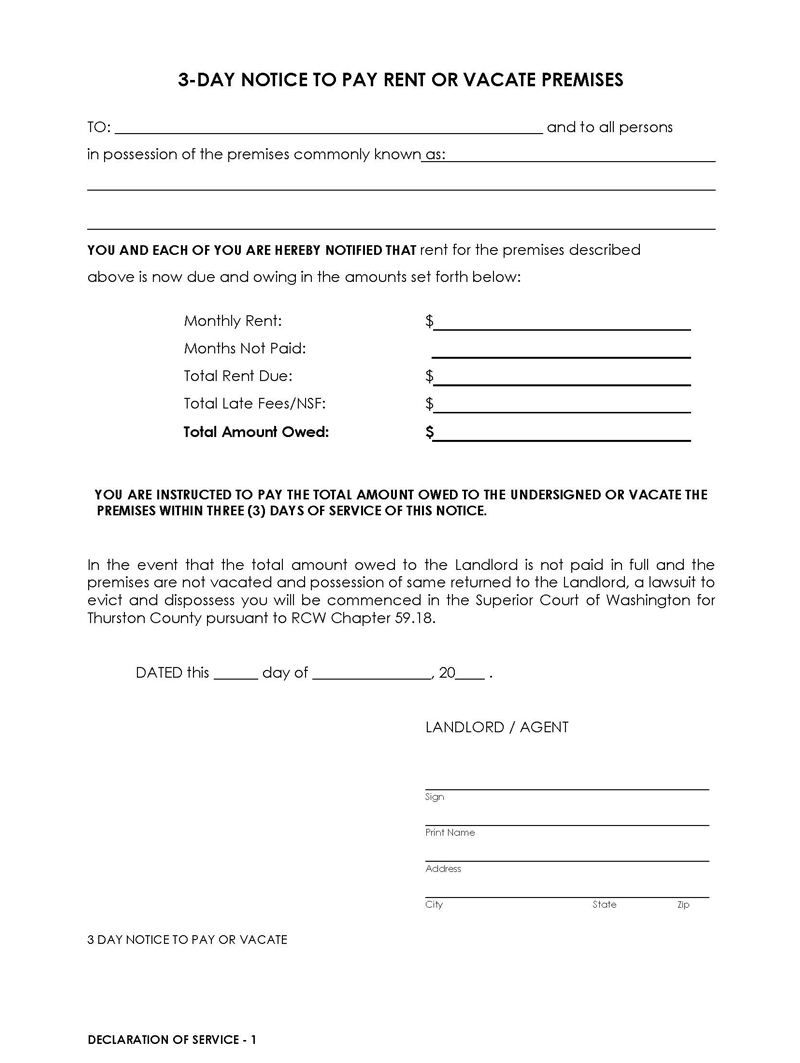
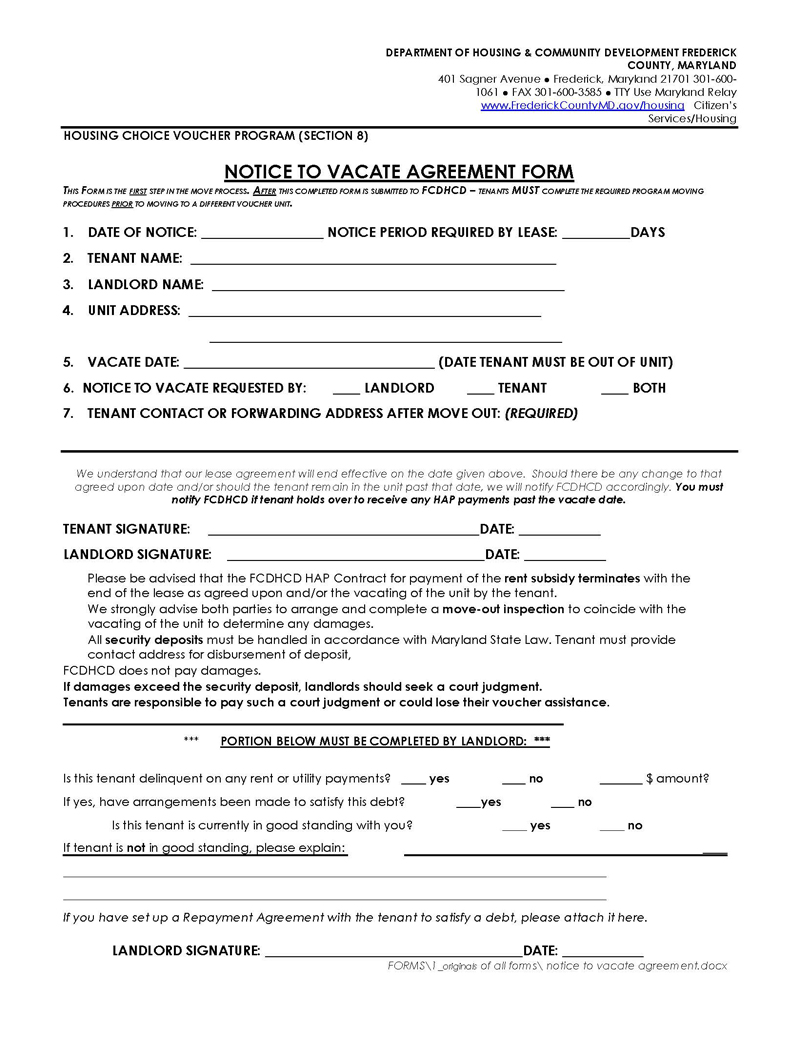
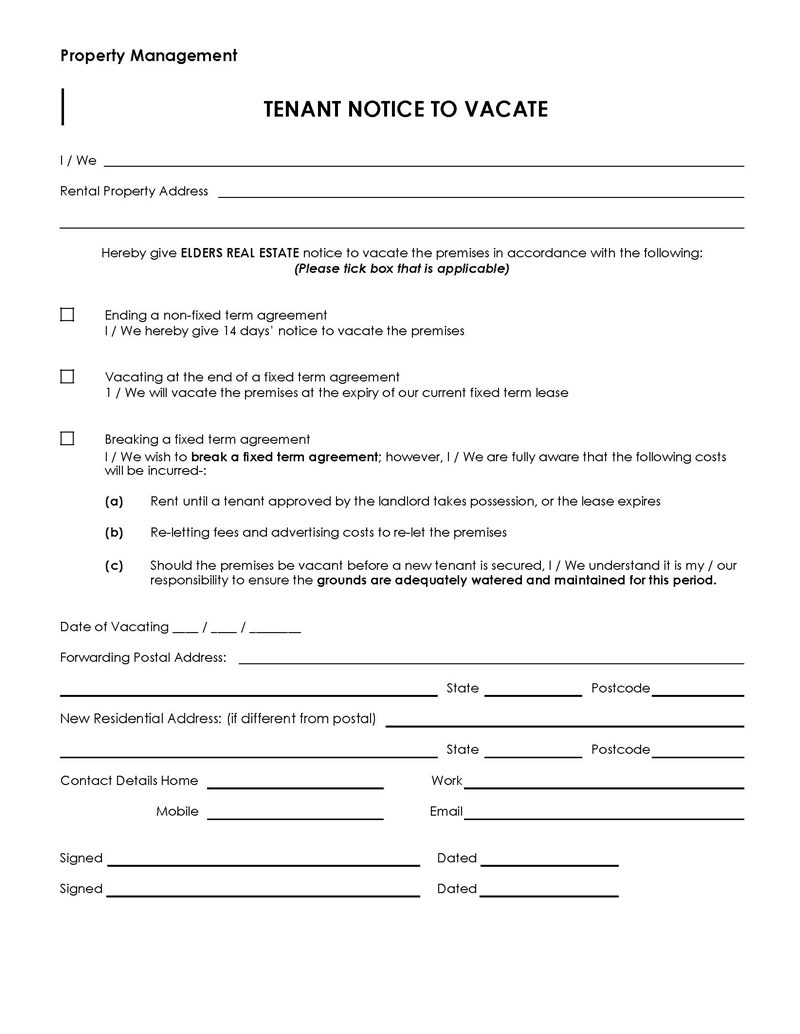
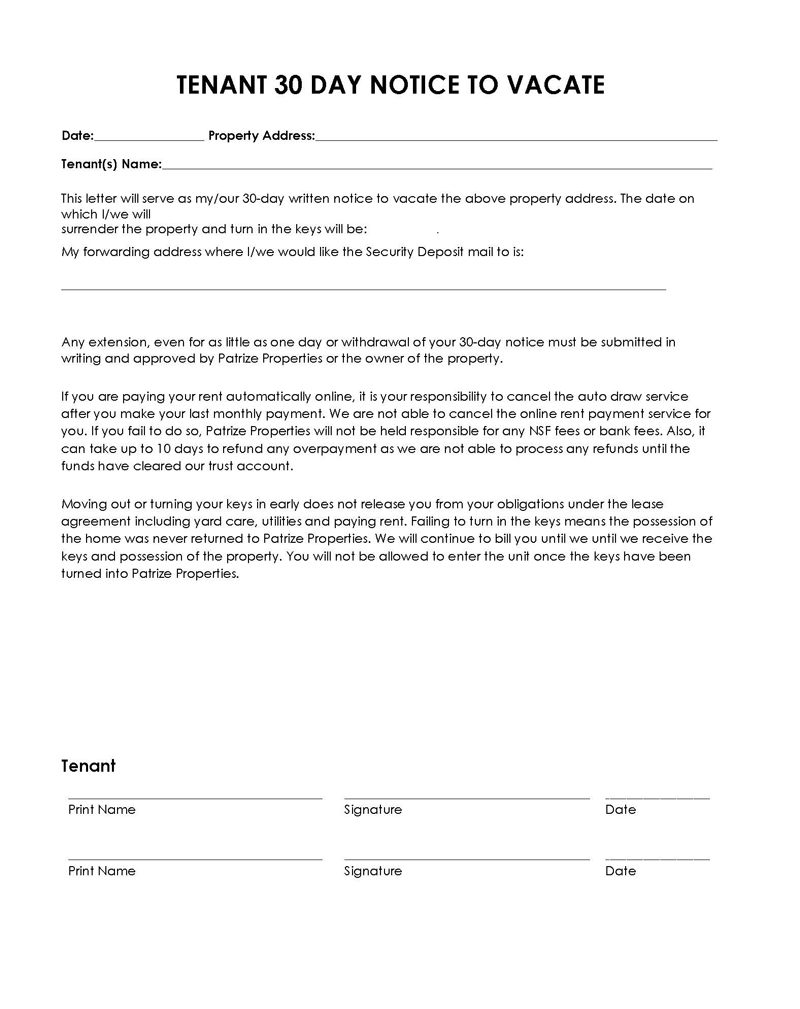
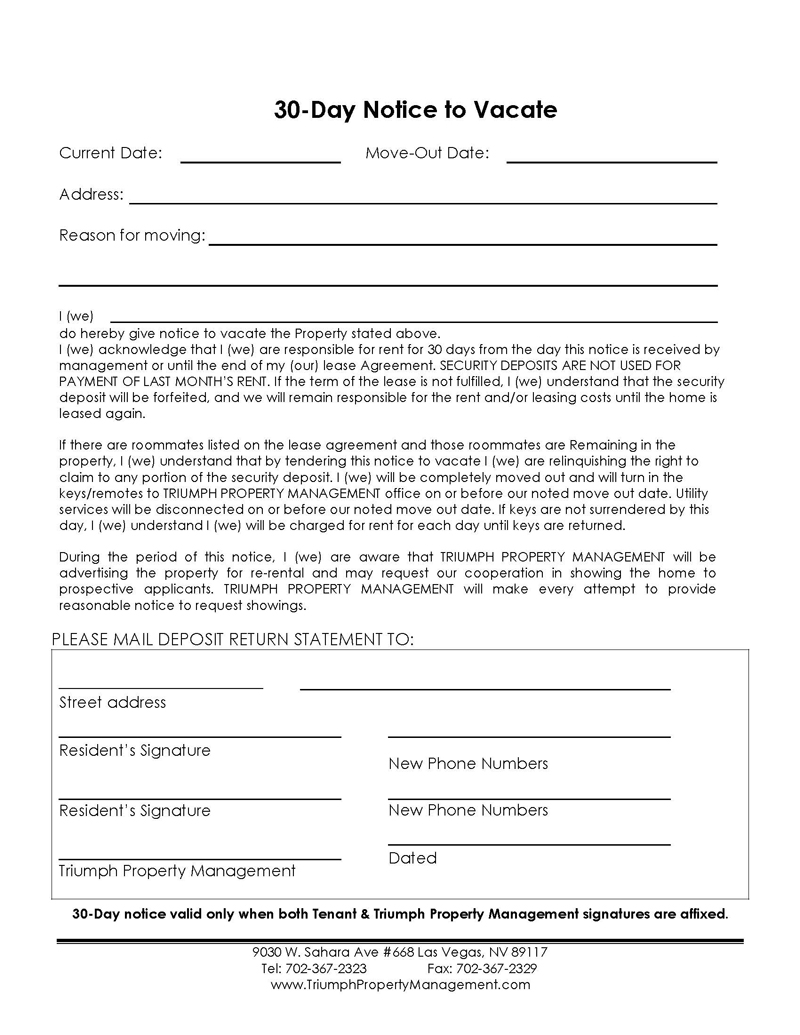
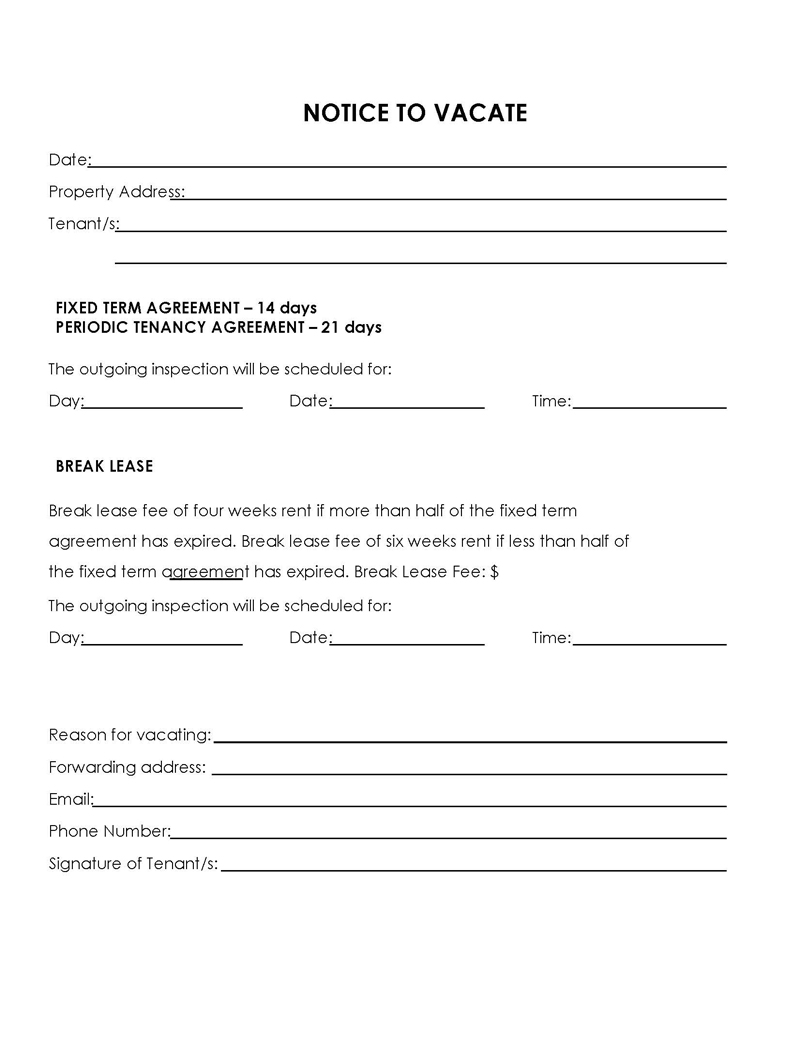
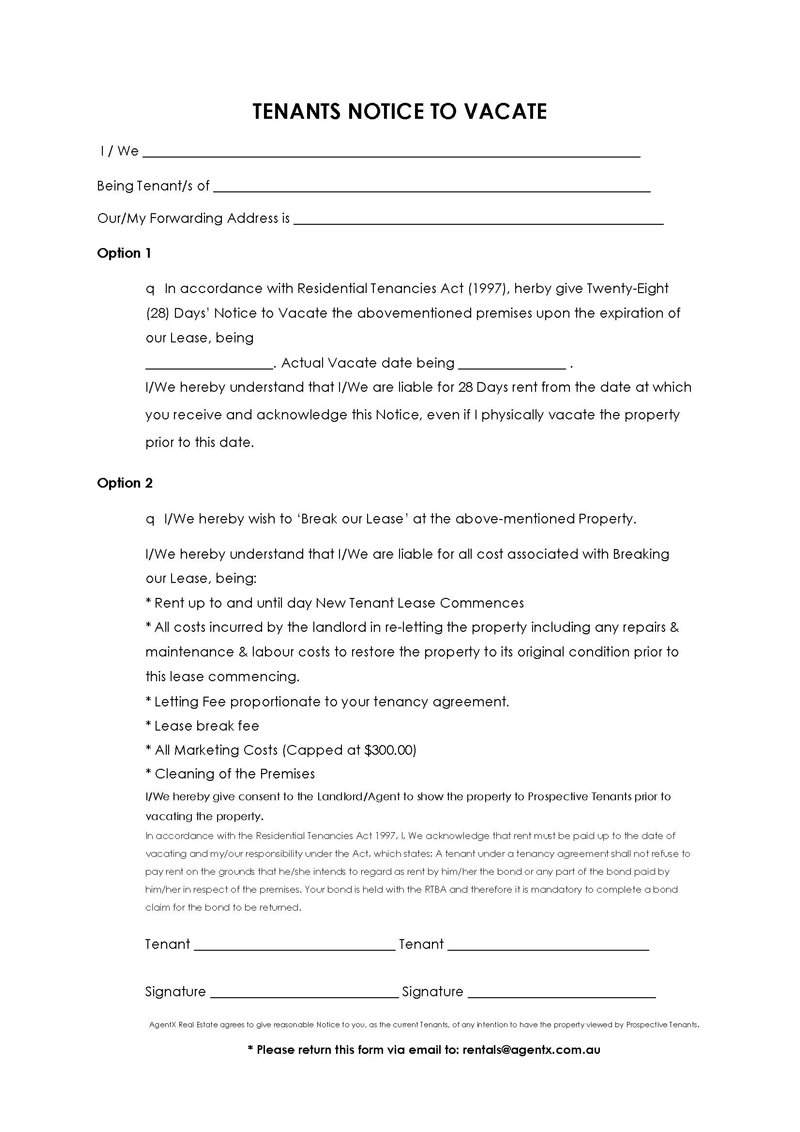
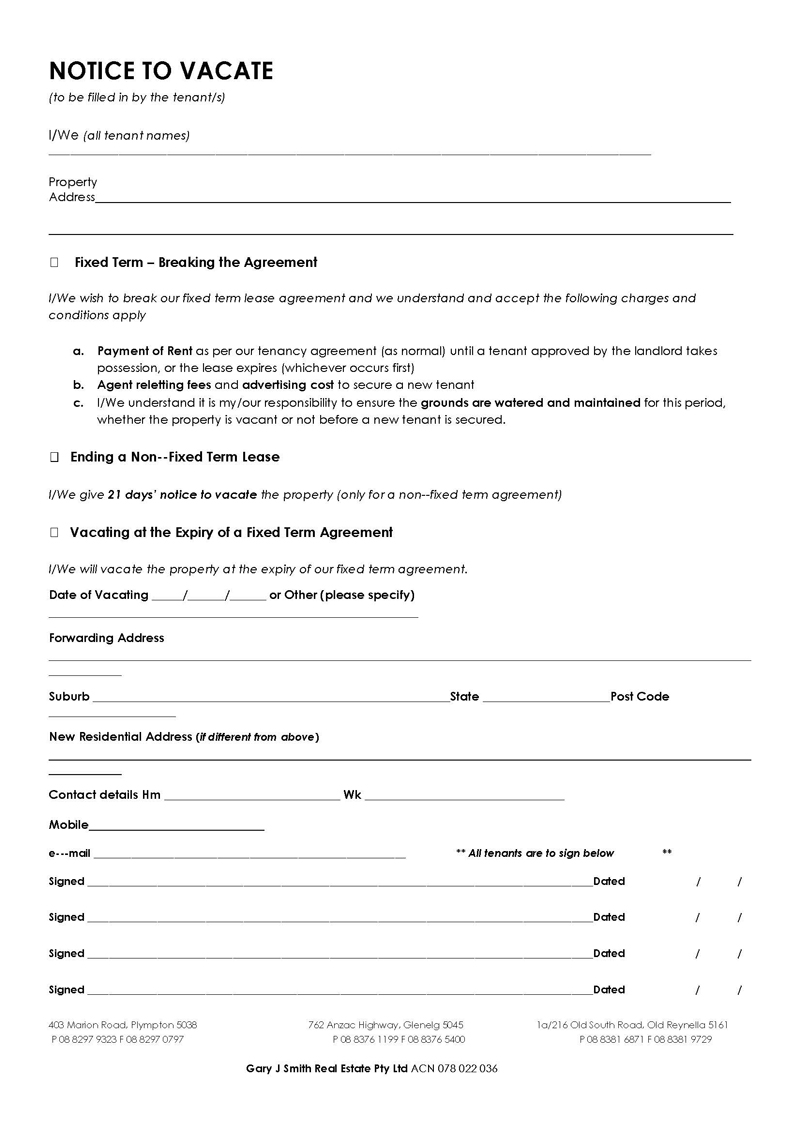
Frequently Asked Questions
Yes. However, it is advisable to consult the existing lease agreement and state laws. This is because most lease agreements contain statements warning tenants not to hand out any notices in writing. Most, if not all, state laws require that a notice or other document be issued in writing to be legally considered executed. Thus, it is advisable to always have it typed and printed.
It is not advisable to incorporate complaints about building management issues in the notice. This is because you do not know how your landlord will react to your complaints, which may strain the relationship between you and your landlord. If you have a legitimate/genuine complaint that needs immediate attention, it should be addressed in a separate letter and in person.
This is dependent on who is sending the notice. If a landlord sends the letter, it can qualify as an eviction notice. However, the landlord must substantiate their decision with the tenant and comply with applicable state laws.
It is not advisable to send a notice through email because the courts may deem this invalid. You should send the notice via certified mail and keep a copy of it for your records. If you intend to use email, you can do so and provide your landlord with an opportunity to view a copy of your notice online.
If the lease agreement does not specify the number of days you have to vacate the property, you can address the situation as follows. First, review state laws and determine the applicable notice period. If this is not possible, it is recommended that you settle on 30 days as a reasonable amount of time to provide before moving out. This will allow your landlord enough time in which they may be able to find a replacement tenant or ask for an extension on your rent payment.
Once you issue the notice, you cannot withdraw your letter. This is because this might interfere with any plans the landlord has set in motion after receiving the letter.
This aspect of moving is usually negotiated between the tenant and the landlord. Ordinarily, tenants are required to pay the entire month’s rent even if they are vacating the premises within that month. The final decision typically rests on the landlord.
This is a letter that landlords send when they want to notify their tenants that they should move out of the space they are renting. It can be issued due to various reasons, such as rent payment default, breach of lease agreement terms, or any other valid reason.

